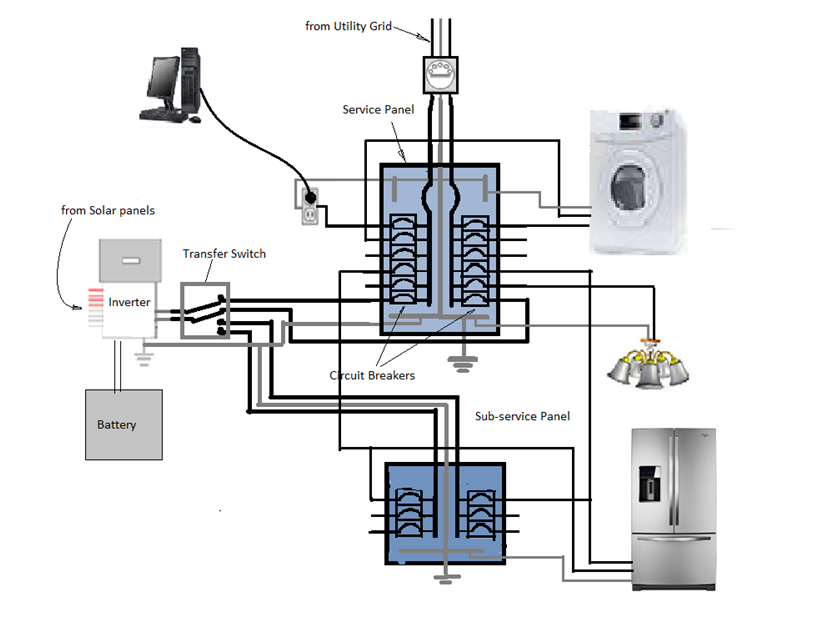Currently, residential renewable energy systems have several deficiencies. For example, grid-tied photovoltaic (PV) systems, when there is a problem on the power grid, this type of PV systems must be shut down to prevent possible casualties or damage to equipment regardless if it is generating electricity or not. Wouldn’t it be better if the PV system can continue to provide power to some crucial appliances in this situation?

There are hybrid PV systems ( grid-tied PV systems with batteries) that can provide backup power for users during a power outage, but installing a such system requires a sub-service panel, a bi-direction inverter, a transfer switch, and an addition beside the battery system. Its cost compared to grid-tied PV is almost doubled.
Here is a solution to address the above problems cost-effectively. The solution is to target the key component of a local electric system, to make it more robust and intelligent.

To understand why it is a cost-effective solution, let’s have a look at how a PV system is connected to a power grid. From Figure, you can see that a grid-tied residential PV system is also connected to a utility grid through the load center. Because all the connections through the load center are fixed, when there is a power outage, to prevent islanding, the PV system has to be shut down. Figure 2 shows a grid-tied PV system with batteries. From this figure, it is not hard to understand why this type of PV system is so expensive.

From figure 3 you can see, after replacing the load center with an intelligent device, DuliISP, the structure of a grid-tied PV system with batteries is simplified, therefore significantly reducing the components and labor cost. Meanwhile, the embedded energy management features enable users to more efficiently use energy, and to get their money back. in a few years.
